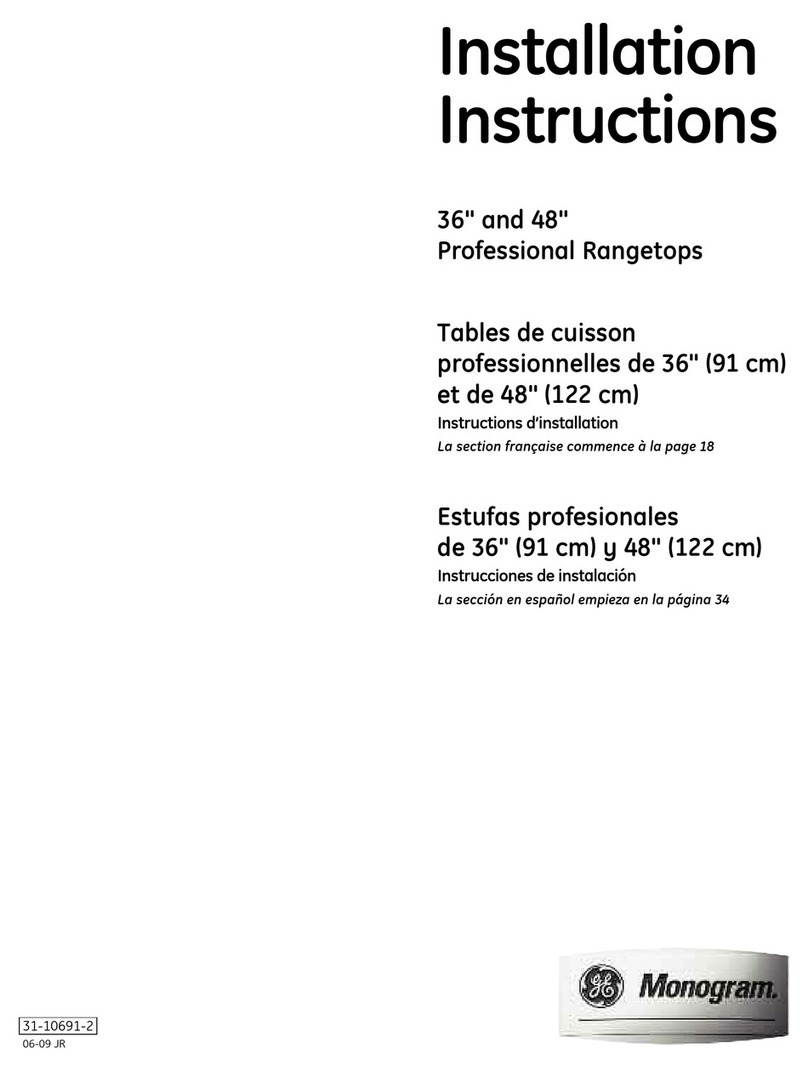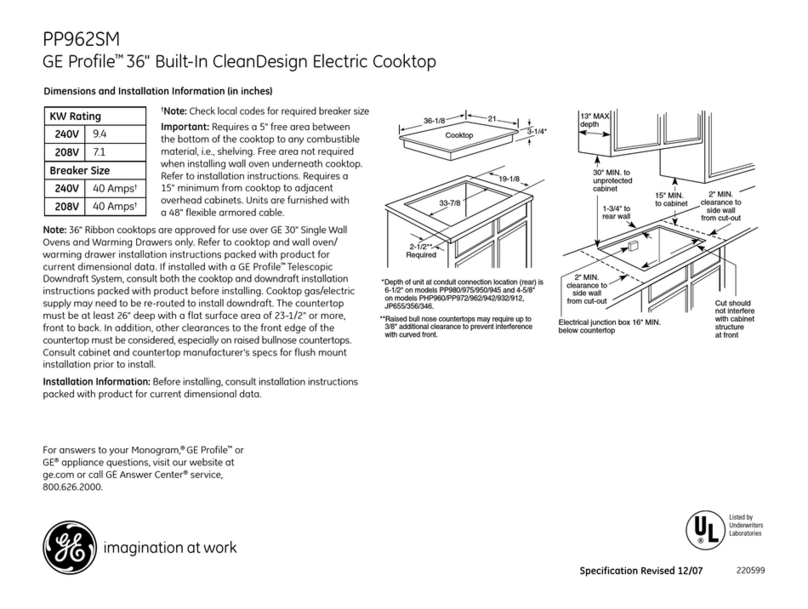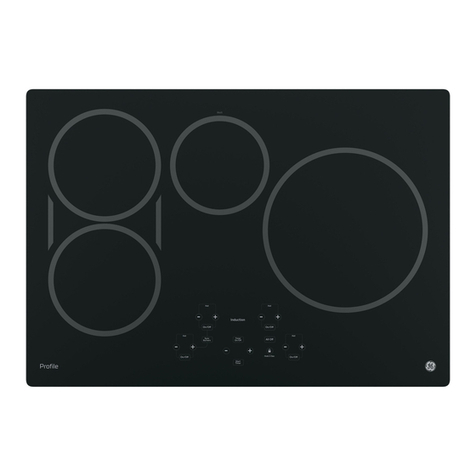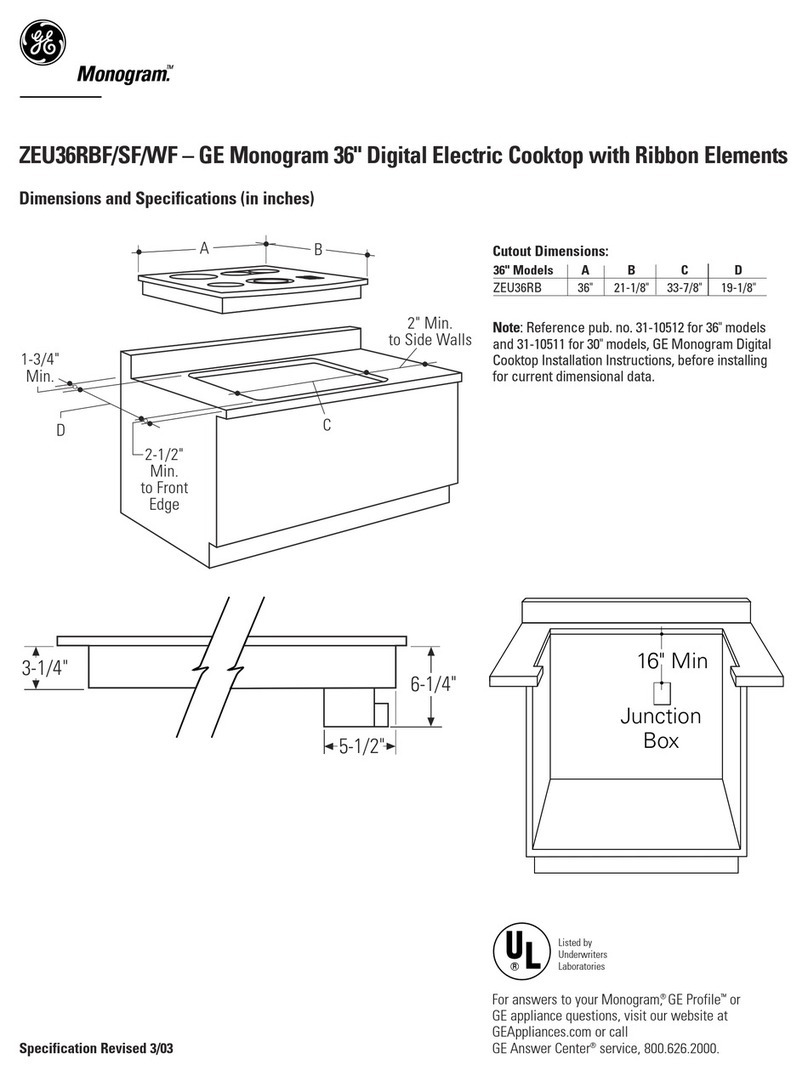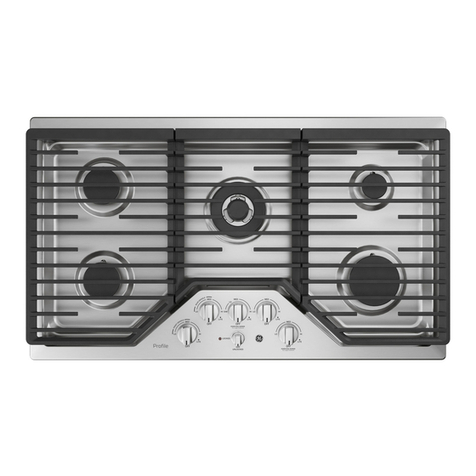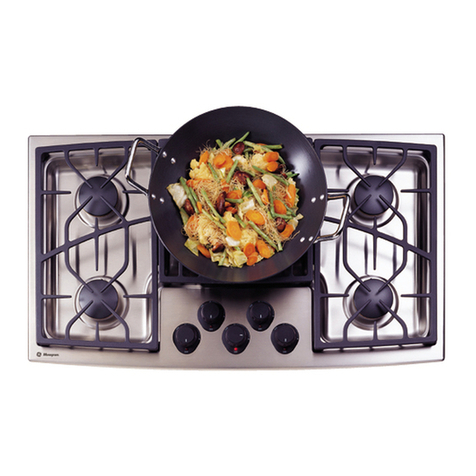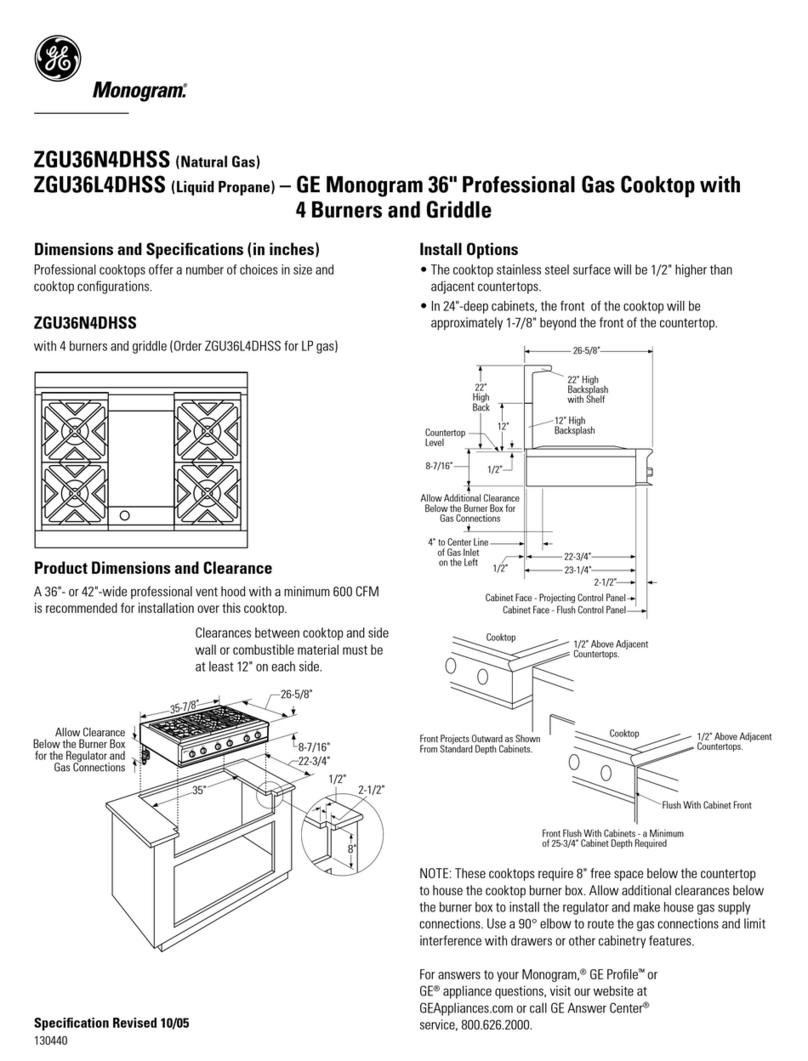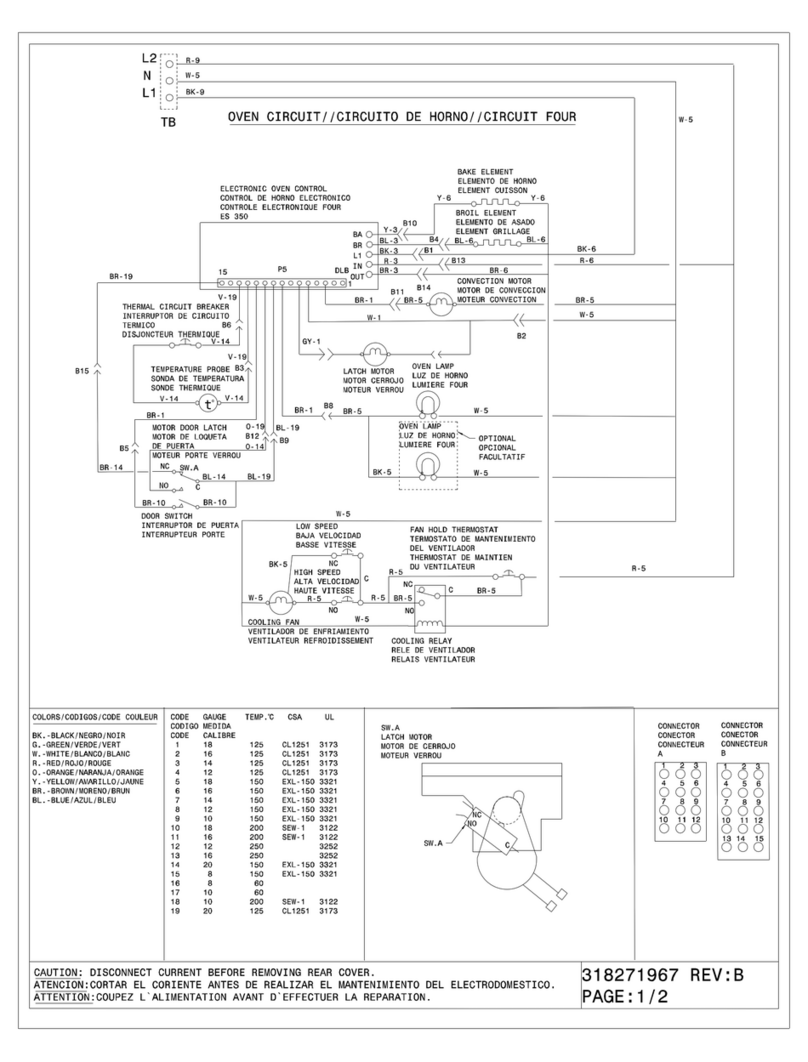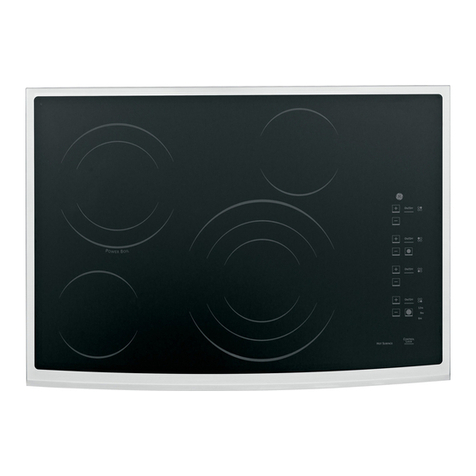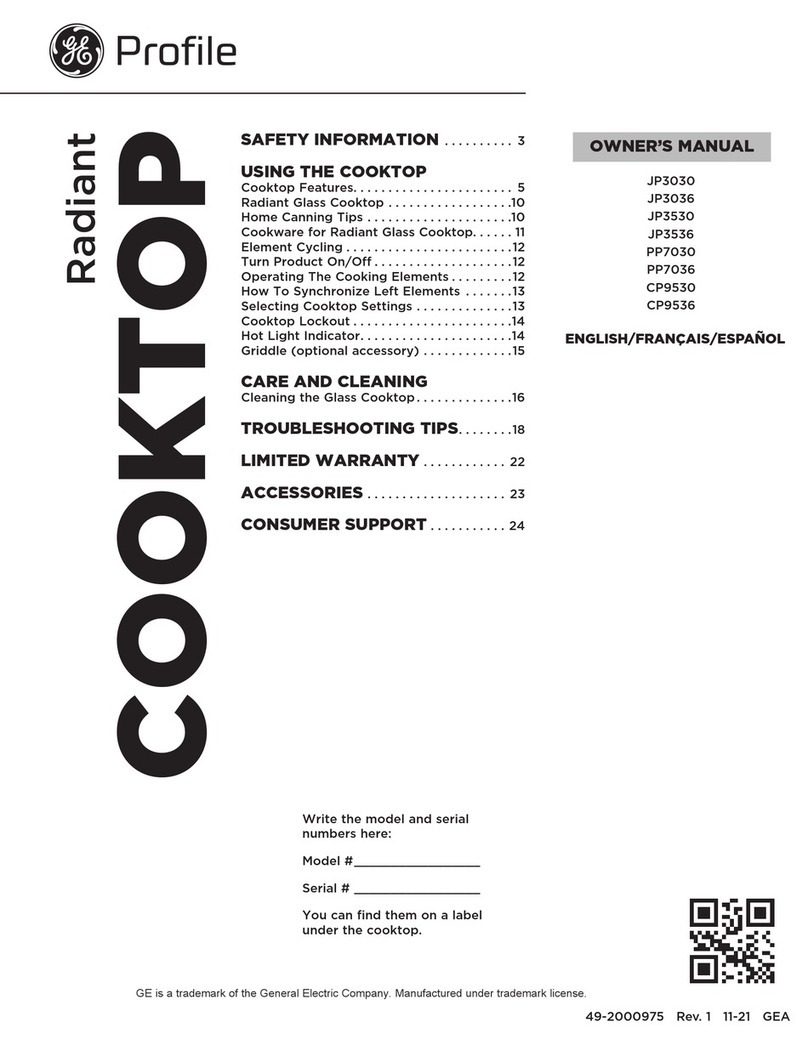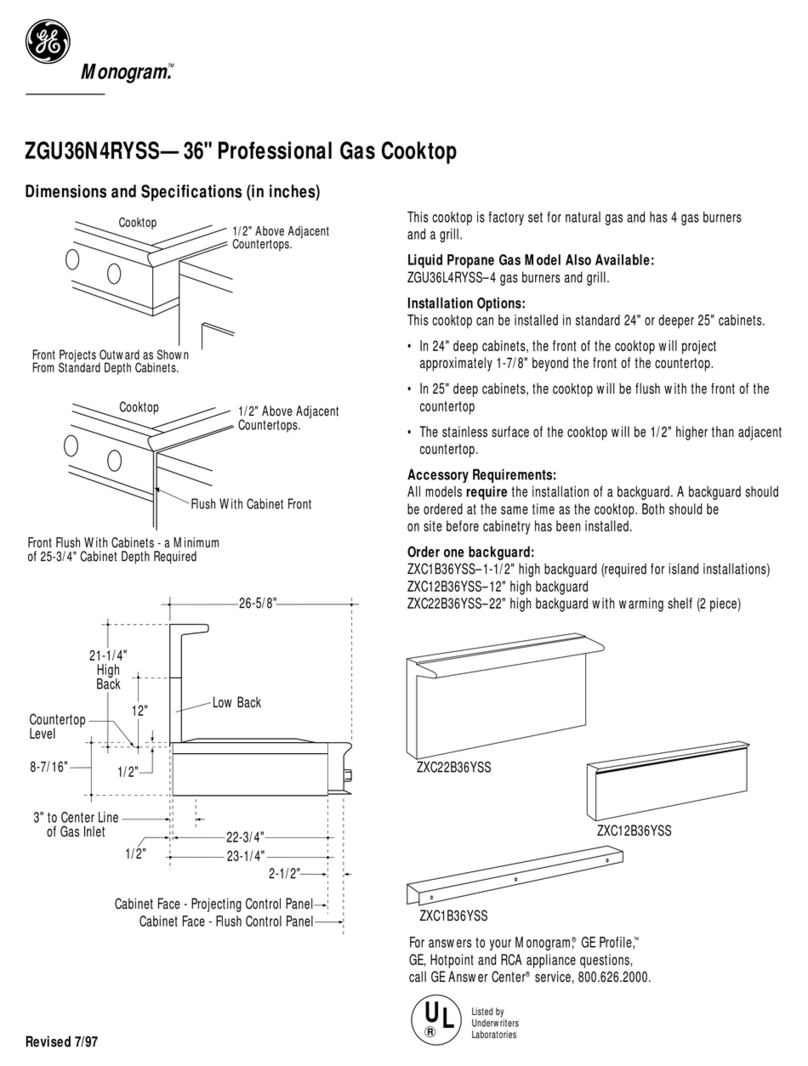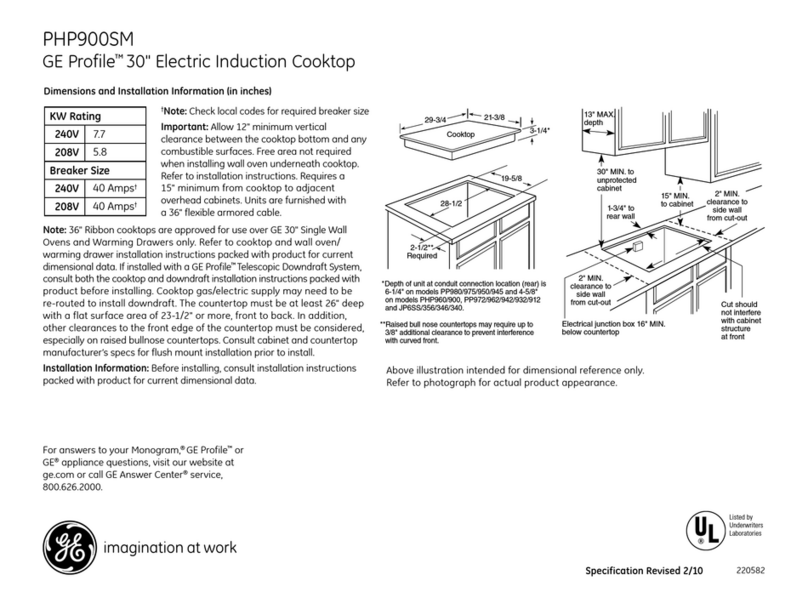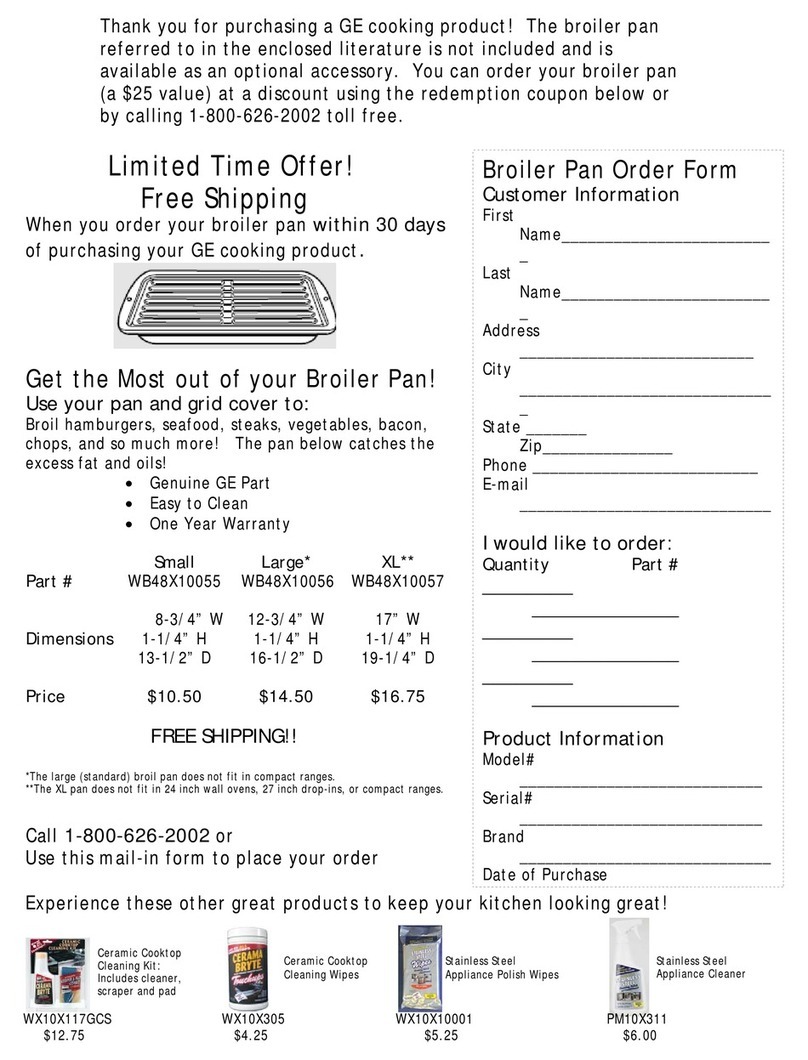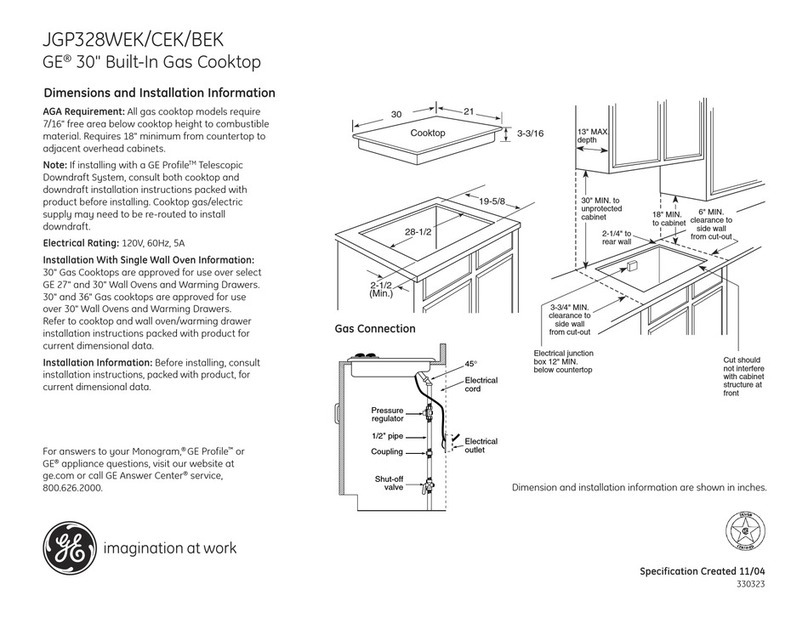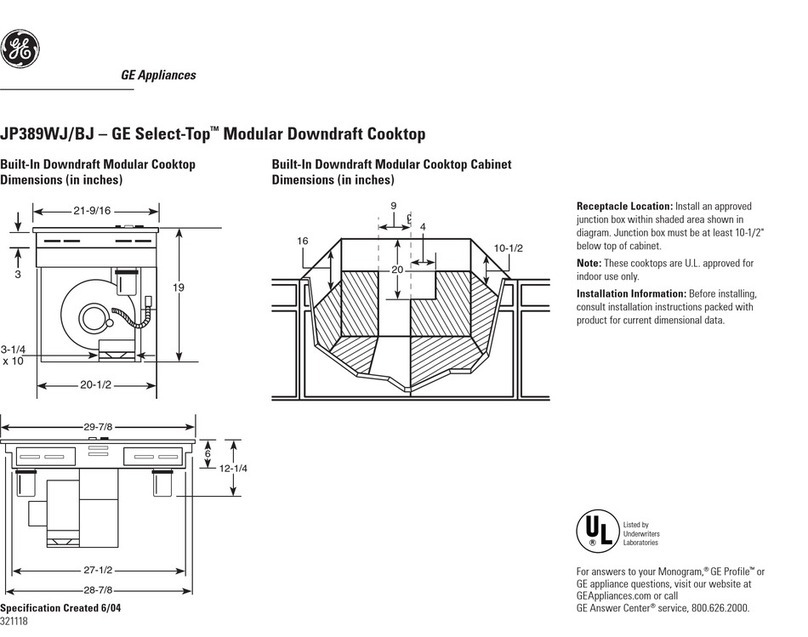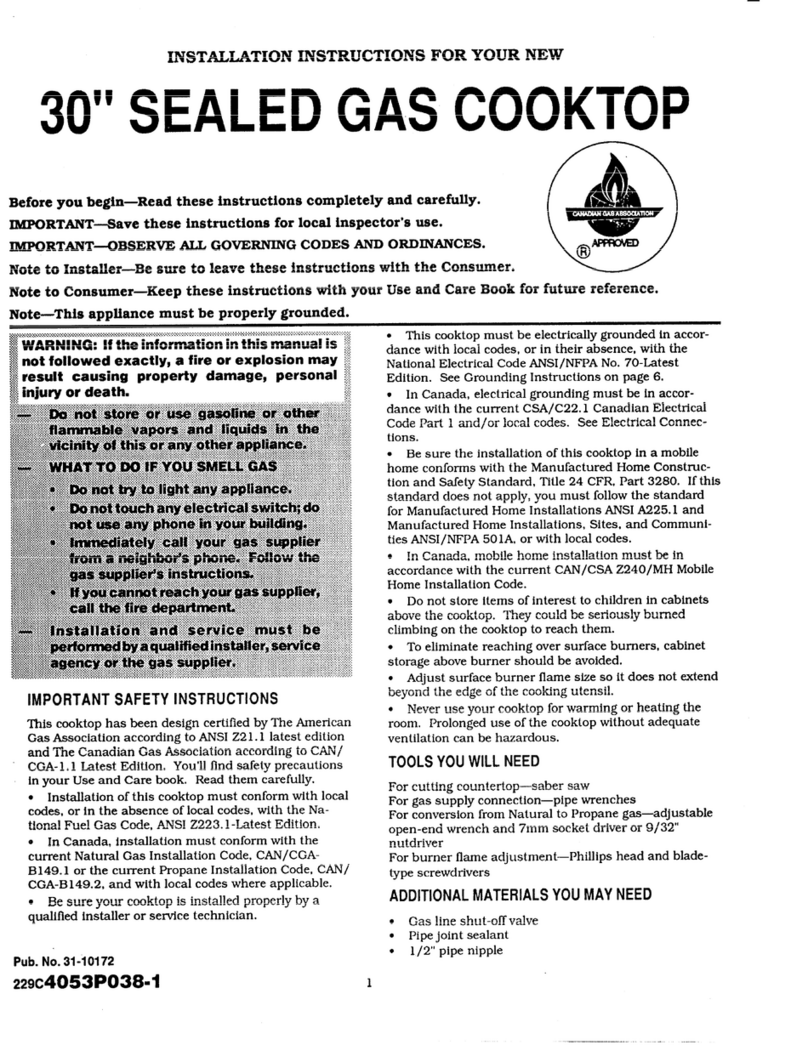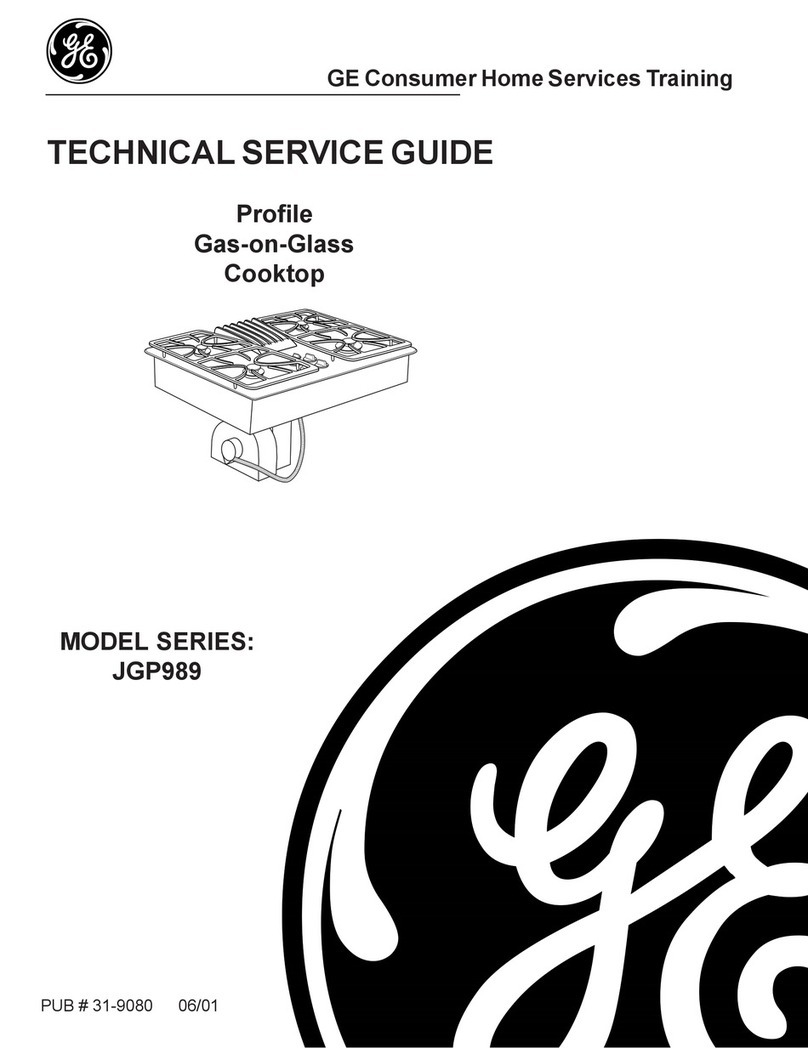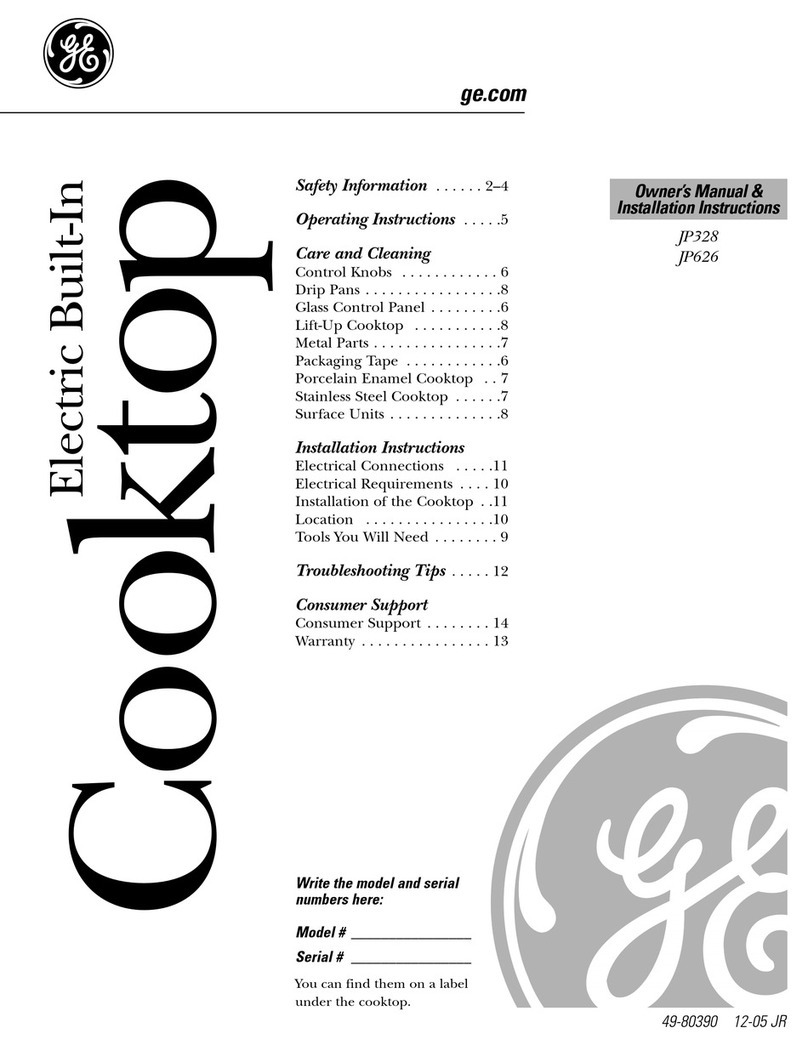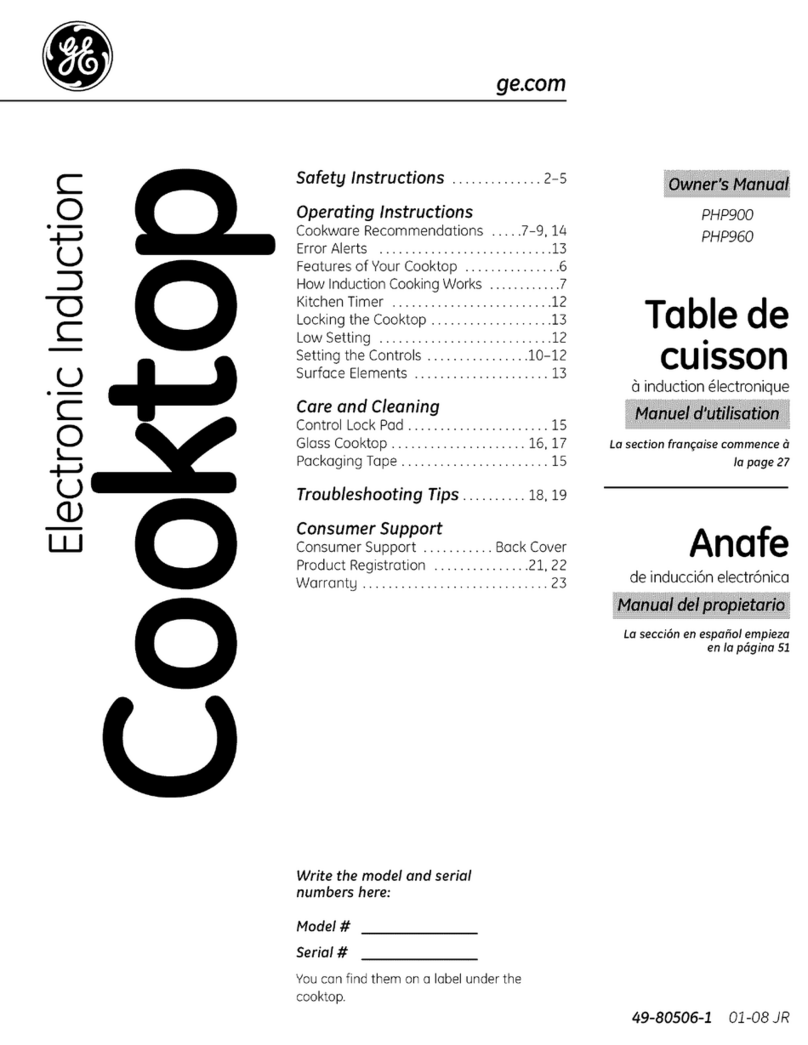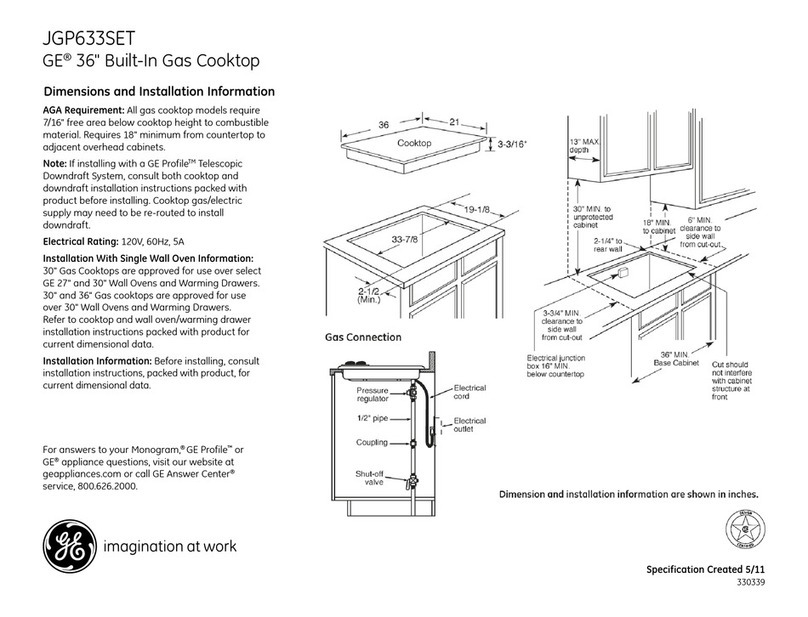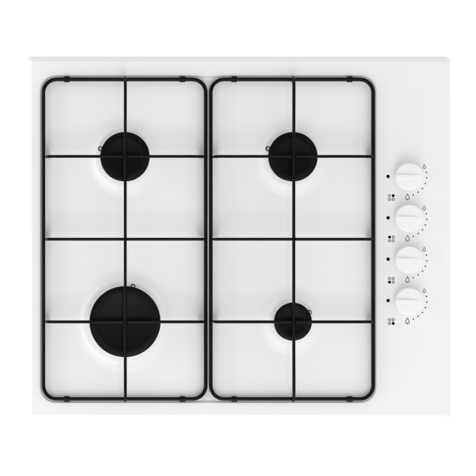6
WARNING!
SAFETY PRECAUTIONS
IMPORTANT SAFETY INSTRUCTIONS
Read all instructions before using this appliance.
• Do not let cooking grease or other flammable materials
accumulate on the cooktop.
• Do not touch surface units. These surfaces may be hot
enough to burn even though they are dark in color. During
and after use, do not touch, or let clothing or other flammable
materials contact the surface units or areas nearby the surface
units; allow sufficient time for cooling first.
Potentially hot surfaces include the cooktop and areas facing
the cooktop.
• To minimize the possibility of burns, ignition of flammable
materials and spillage, the handle of a container should be
turned toward the center of the cooktop without extending
over any nearby surface units.
• Always turn the surface unit control to off before removing
the cookware.
• Use proper pan size—Select cookware having flat bottoms
large enough to cover the surface unit heating element. The
use of undersized cookware will expose a portion of the
surface unit to direct contact and may result in ignition of
clothing. Proper relationship of cookware to burner will also
improve efficiency.
• Never leave surface units unattended at high heat settings.
Boilovers cause smoking and greasy spillovers that may catch
on fire.
• Only certain types of glass, glass/ceramic, earthenware
or other glazed containers are suitable for cooktop cooking;
others may break because of the sudden change in
temperature.
• Keep an eye on foods being fried at high or medium high
heat settings.
• Foods for frying should be as dry as possible. Frost on
frozen foods or moisture on fresh foods can cause hot fat to
bubble up and over the sides of the pan.
• Use little fat for effective shallow or deep-fat frying.
Filling the pan too full of fat can cause spillovers when food
is added.
• If a combination of oils or fats will be used in frying, stir
together before heating, or as fats melt slowly.
• Always heat fat slowly and watch as it heats.
• Use a deep fat thermometer whenever possible to prevent
overheating fat beyond the smoking point.
• Never try to move a pan of hot fat, especially a deep fat
fryer. Wait until the fat is cool.
• Do not store flammable materials near the cooktop.
• Keep the vent grille and grease filters clean to maintain
good venting and to avoid grease fires.
• Do not store or use combustible materials, gasoline or other
flammable vapors and liquids in the vicinity of this or any
appliance.
• Clean only parts listed in this Owner’s Manual.
• Do not leave paper products, cooking utensils or food on the
cooktop when not in use.
• Keep cooktop clean and free of accumulation of grease or
spillovers which may ignite.
• Never heat unopened food containers. Pressure buildup
may make container burst and cause injury.
• Never leave jars or cans of fat drippings on or near your
cooktop.
• Be sure the drip pans (on coil modules only) are not
covered and are in place. Their absence during cooking
could damage cooktop parts and wiring.
• Do not use aluminum foil to line the cooktop tubs,
reflector pan, grill or griddle. Misuse could result in a
shock, fire hazard or damage to the cooktop.
• Keep the tub, the reflector pan, the grill grate and the
grease collector jar clean. Be sure the drain hole in tub is
open. If clogged, a fire can occur. Empty the grease jars
frequently.
• Do not immerse or soak the removable coil surface unit
module, the solid disk module, the radiant module or the
grill heating element. Do not put them in a dishwasher.
• Never leave the kitchen while using the grill or griddle
accessory.
• Do not replace the grease collector jar with a mayonnaise
jar which could break when hot grease drips into it. Replace
with any wide mouth canning jar.
• To control flame-ups, turn down the heat setting to low
rather than off. This keeps the downdraft vent blower on. Or,
turn the vent blower to on, then turn the grill off. Use a long-
handled utensil to carefully remove the food from the grill.
These steps should control the flame until it eventually goes
out. If it does not, cover the entire grill module with a cookie
sheet or the lid from a large roasting pan. Use a pot holder to
remove this later because it will be hot.
